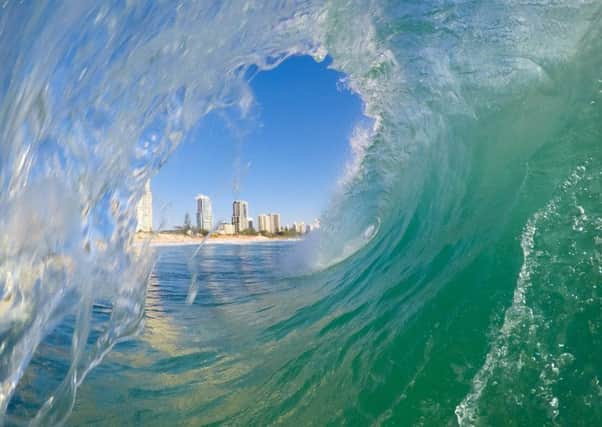Algae layer on ocean surface thwarts ability to suck carbon from the air


An invisible “skin” of algae and phytoplankton on the sea surface hampers its ability to absorb climate-warming carbon dioxide from the atmosphere, according to scientists.
Oceans are the planet’s biggest sink for greenhouse gases, but researchers from Edinburgh, Newcastle and Exeter have found this layer of biological compounds reduces the amount being captured through wave action by up to 50 per cent.
Advertisement
Hide AdAdvertisement
Hide AdThey said the findings could have major implications for predicting future climate.
Gas exchange between the air and the ocean is controlled by turbulence at the sea surface, the main cause of which is waves generated by wind. Greater turbulence increases the amount of gas taken in.
However, results from the latest studies shows naturally occurring surfactants inhibit absorption by smoothing out the sea surface.
The micro-organisms favour warmer conditions, so are increasing as oceans heat up as a result of climate change.
The academics are warning the process could represent a vicious circle, driving further climate warming.
Dr Ryan Pereira, a Lyell research fellow at Edinburgh’s Heriot-Watt University, said: “As surface temperatures rise, so too do surfactants, which is why this is such a critical finding. The warmer the ocean surface gets, the more surfactants we can expect, and an even greater reduction in gas exchange.”
Co-researcher Professor Rob Upstill-Goddard, professor of marine biogeochemistry at Newcastle University, said: “The suppression of carbon dioxide uptake across the ocean basin due to surfactants, as revealed by our work, implies slower removal of anthropogenic carbon dioxide from the atmosphere and thus has implications for predicting future global climate.”
Studies were carried out at 13 sites across the Atlantic Ocean in a range of ecosystems.
Advertisement
Hide AdAdvertisement
Hide AdDr Pereira added: “These natural surfactants aren’t necessarily visible like an oil slick or a foam, and they are even difficult to identify from the satellites monitoring our ocean’s surface.
“We need to be able to measure and identify the organic matter on the surface microlayer of the ocean so that we can reliably estimate rates of gas exchange of climate-active gases, such as carbon dioxide and methane.”
The research was funded by the Natural Environment Research Council, Leverhulme Trust and the European Space Agency.